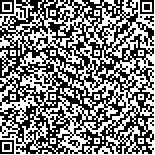| Quote
: |
孔智谦,莫梦莹,陈达满,黄海燕.参附注射液治疗心肌缺血再灌注损伤网络药理学分析[J].湖南中医药大学学报英文版,2022,42(1):134-143.[Click to copy
] |
|
| |
|
|
| This paper
:Browser 1584times Download 461times |
| 参附注射液治疗心肌缺血再灌注损伤网络药理学分析 |
| 孔智谦,莫梦莹,陈达满,黄海燕 |
| (广州中医药大学东莞医院, 广东 东莞 523000;广州中医药大学第四临床医学院, 广东 深圳 518033) |
| 摘要: |
| 目的 基于网络药理学研究预测参附注射液治疗心肌缺血再灌注损伤的主要活性成分、作用靶标和相关信号通路,并应用体外实验验证,揭示参附注射液治疗心肌缺血再灌注损伤潜在作用机制。方法 应用中药系统药理学数据库与分析平台收集参附注射液的有效活性成分和靶点信息;在GeneCards疾病数据和DisGeNET疾病数据库中收集缺血再灌注损伤疾病靶点;取药物靶点与疾病靶点进行交集映射;运用STRING数据库构建蛋白质-蛋白质相互作用网络,获取核心靶标信息;运用R软件进行GO分析和KEGG通路富集分析;最后运用体外实验验证参附注射液核心成分对对CASP3、CASP8、AP-1、IL-1β、IFNG作用靶点的调控作用。结果 预测发现参附注射液有效活性成分有9个,靶点有56个,有38个潜在作用靶点作用于缺血再灌注损伤的治疗,包括CASP3、CASP8、IL-1β等;涉及IL-17、TNF、p53等信号通路;体外细胞实验结果验证参附注射液的有效活性成分可活化IL-17和TNF信号通路,下调相关靶标CASP3、CASP8、AP-1、IL-1β、IFNG的表达,抑制炎症反应和细胞凋亡。结论 参附注射液有多成分、多靶点的优势,其治疗缺血再灌注损伤的作用机制可能为活化IL-17和TNF信号通路,为新药开发和后续研究提供参考。 |
| 关键词: 心肌缺血再灌注损伤 参附注射液 网络药理学 β-谷甾醇 人参皂苷 |
| DOI:10.3969/j.issn.1674-070X.2022.01.026 |
| Received:July 09, 2021 |
| 基金项目:广东省中医药局科研项目(20184019)。 |
|
| Network pharmacology analysis of Shenfu Injection for the treatment of myocardial ischemia reperfusion injury |
| KONG Zhiqian,MO Mengying,CHEN Daman,HUANG Haiyan |
| (Dongguan Hospital, Guangzhou University of Chinese Medicine, Dongguan, Guangdong 523000, China;Fourth Clinical Medical College, Guangzhou University of Chinese Medicine, Shenzhen, Guangdong 518033, China) |
| Abstract: |
| Objective To predict the main active ingredients, action targets and related signaling pathways of Shenfu Injection in the treatment of myocardial ischemia reperfusion injury based on the network pharmacological research, and to explore the potential action mechanism of the Shenfu Injection for myocardial ischemia reperfusion injury through in vitro experimental verification. Methods The TCM system and pharmacological database and analysis platform was used to collect the effective active ingredients and targets information of the Shenfu Injection; ischemic reperfusion injury disease targets were collected in GeneCards disease database and DisGeNET disease database; intersection mapping of drug targets and disease targets was carried out; the protein-protein interaction network was constructed using the STRING database to obtain core targets information; R software was used for GO analysis and KEGG pathway enrichment analysis; finally, in vitro experiments were used to verify the control effect of the core component of Shenfu Injection on the activation of CASP3, CASP8, AP-1, IL-1β, IFNG. Results It is predicted that there were 9 effective active ingredients of the Shenfu Injection, 56 targets and 38 potential targets acting on the treatment of ischemia reperfusion injury, including CASP3, CASP8, IL-1β, involving IL-17, TNF, p53 signaling pathways, etc. In vitro cell experimental results confirmed that the Shenfu Injection can activate IL-17 and TNF signaling pathways, reduce the expression of relevant targets CASP3, CASP8, AP-1, IL-1β, IFNG and inhibit inflammatory response and apoptosis. Conclusion Shenfu Injection has the advantages of multi-component and multi-target, and its mechanism of action in the treatment of ischemia reperfusion injury may be the activation of IL-17 and TNF signaling pathways, which can provide reference for the development of new drugs and subsequent studies. |
| Key words: myocardial ischemia reperfusion injury Shenfu Injection network pharmacology interleukin-17 tumor necrosis factor β-sitosterol ginseng saponin |
|

二维码(扫一下试试看!) |
|
|
|
|


